What is it?
Skinali - glass panels on which the image is applied “from the inside out”. You can apply it in any way - just paint, stick on individual elements, for example, old newspapers, which is especially suitable for the loft style. But a more perfect way to create kitchen skins is to apply a picture using photo printing.
There are no restrictions on the drawing - it all depends on your imagination. And you can be sure that you will not see anything like this in any apartment!
Skinali are one-color, with graphic images, they are bright, juicy, using a whole gamut of colors. Smooth colored skins, which are made from special, factory-dyed glass, also look good.
Skinals in the interior can become a style-forming element, and designers often use this technique to "revive" a boring room and give it dynamics, saturation, and brightness.
A significant plus of skinals is resistance to atmospheric changes, to sunlight, to high temperatures. It is equally important that they are easy to manufacture, made quickly and easily put in place, the main thing is not to make a mistake in the size when ordering.
The foundation
Skinny kitchens look great, but how strong and durable are they? The basis was skinned - tempered glass. Its strength is five times higher than normal. Glass is a heavy material, and ordinary glass can crack under its own weight. With the hardened, such a nuisance will not happen.
Tempered glass is an expensive material; plastic or plexiglass can become its budget replacement. Minus - not every drawing can be applied to such a substrate, moreover, it will look less expressive. In addition, plastic can withstand temperature changes and the action of ultraviolet radiation much worse, which means that the pattern can quickly fade, and the base itself can warp.
Picture
The image on kitchen skins is photoprinted directly on the glass - this method is considered the best. Polymer films are often used. Less often - the silk-screen printing method, even less often - laser engraving. After the drawing has already been applied, the glass is tempered.
- Photo printing. With the photo-printing method of application, the illusion of a volumetric image appears. Using this method allows you to create impressive compositions that allow you to change the perception of space, give it depth and expressiveness. The main principle for choosing images is a harmonious combination with the color scheme of the interior, and the correspondence of the scale of the image to the size of the room, unless the designers provide for a special solution.
- Stereo printing. Volumetric skins in the interior will give it even more depth. To obtain a 3D effect when drawing a picture on the base, special ink is used. The image can be any, but certain requirements are imposed on it: high resolution, high quality, certain proportions.
- Film. You can stick a special film on the glass. It can be monochromatic, patterned, matte, transparent, with various patterns, including embossed ones, made in 3D technology. The use of film reduces the cost of the skinale production process, and accordingly the price for the buyer will be lower.The high quality of the film and the tight fit of the apron to the wall will prevent its peeling under the influence of steam and temperature extremes and discoloration of the picture.
Installation
Glass. Kitchens with skinal will look impressive regardless of what kind of glass you prefer to make an apron - matte, transparent, smooth or with a textured surface.
It should be borne in mind that textured glasses with a fabric surface (satin), or having small (crisset) or large (listral) pyramidal protrusions are not suitable for all patterns, and it is more difficult to care for them.
Glass thickness must be at least 6 and no more than 8 mm. For greater expressiveness of the picture, especially if it contains a lot of white color, you can use the opaque glass, which has full transparency. It lacks the greenish tint that ordinary glasses have. But its cost is much higher. For color images, its use is impractical.
Dimensions. It is believed that kitchen skins should not be more than two and a half meters long. If your kitchen is larger, you can create an apron from several parts.
This limitation arises from the fragility of the glass, which can be easily damaged during installation if it is large. The joints of long skins can be beaten, or made almost invisible.
Preparation. Complex surface preparation for the installation of the skin is not needed, if the walls are even, they can be mounted directly on the wall. With a large curvature of the walls, it is better to align them.
They put it in place only after the complete assembly of the furniture. Keep in mind that the attachment points for sockets, roof rails, etc. must be transferred to the skinny manufacturers at the ordering stage, since after the products are ready, it will be impossible to make any holes in them.
Fastening. Depending on what role the skins will play in the interior, what pattern is applied to them, in what condition the wall on which they will be mounted, choose the method of fixing the panels.
- Checkpoint: the panels are screwed directly to the wall using decorative fixing heads protruding from the glass surface. These peculiar “rivets” can be made of different materials, for example, brass, chrome-plated, or even glass, imitating crystal. This method allows you to mount skins even where the wall is not too flat, since there is an adjustable gap between the panel and the wall.
- Hinged: The panels are glued to the wall with polymer glue. In this case, better preservation of the pattern is ensured, the panel is more resistant to mechanical stress. Minus - careful alignment of the wall is required before installation. Another advantage of kitchen skins is the short installation time. Experts will put the finished apron in place in one and a half to two hours.

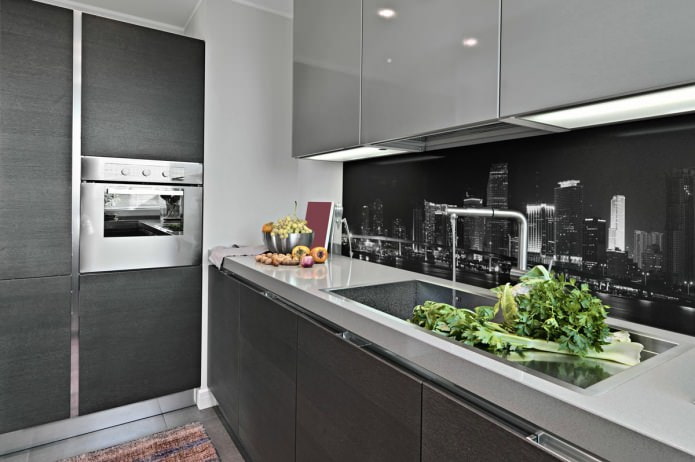
 10 practical tips for arranging a small kitchen in the country
10 practical tips for arranging a small kitchen in the country
 12 simple ideas for a small garden that will make it visually spacious
12 simple ideas for a small garden that will make it visually spacious
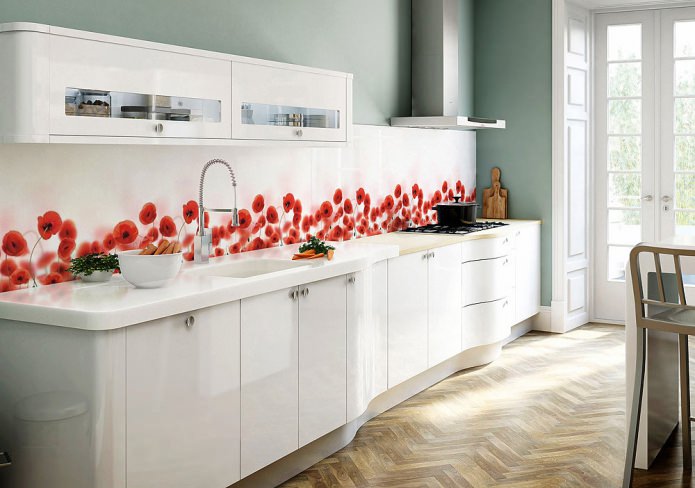
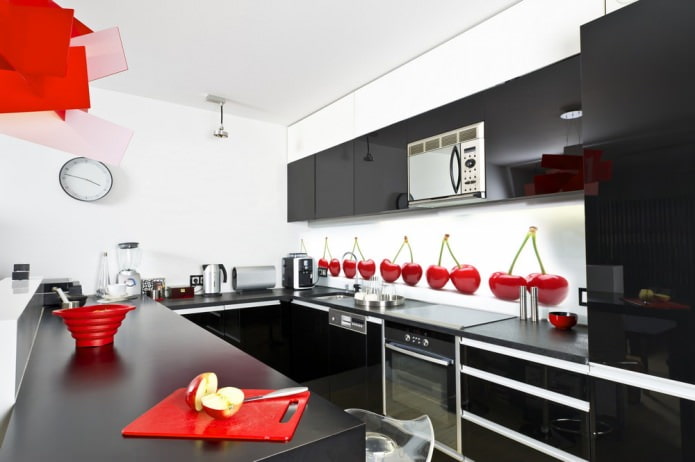
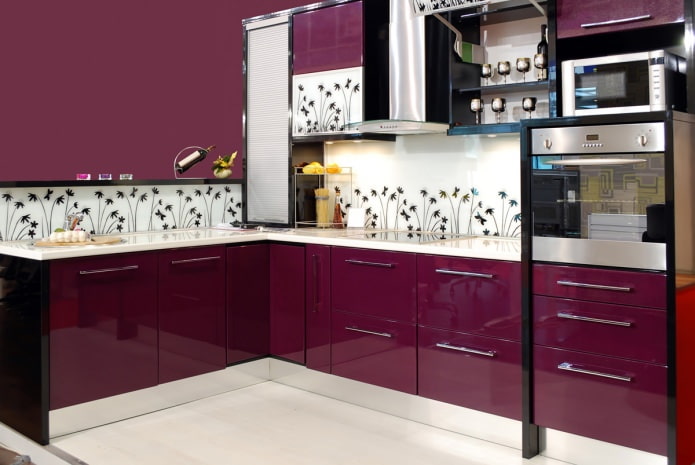
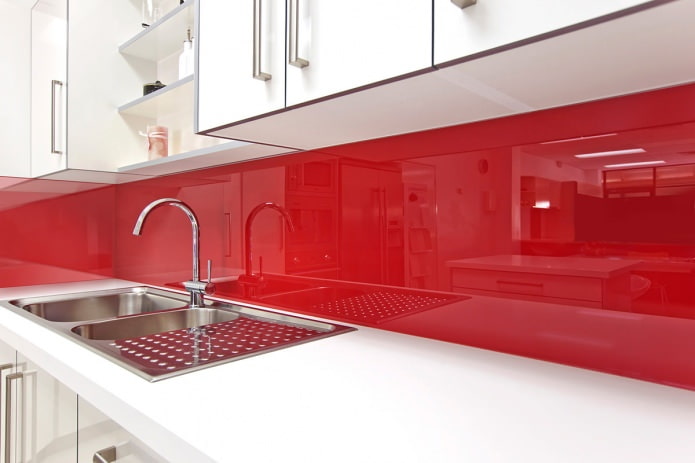
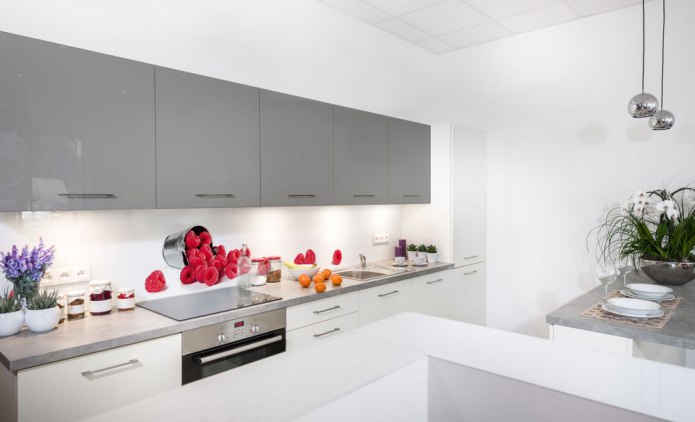
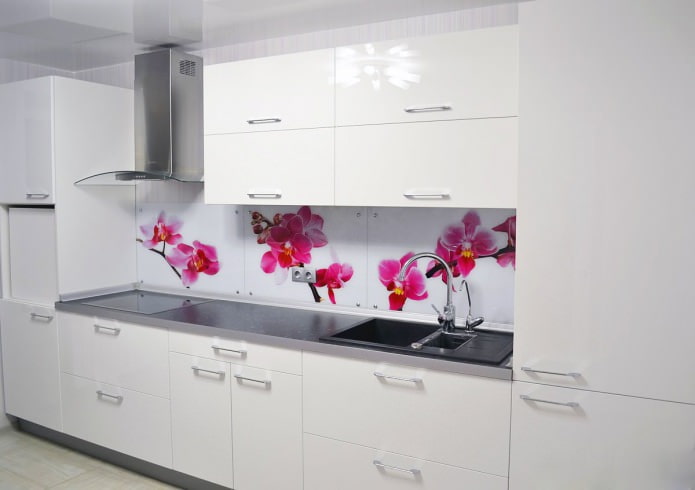
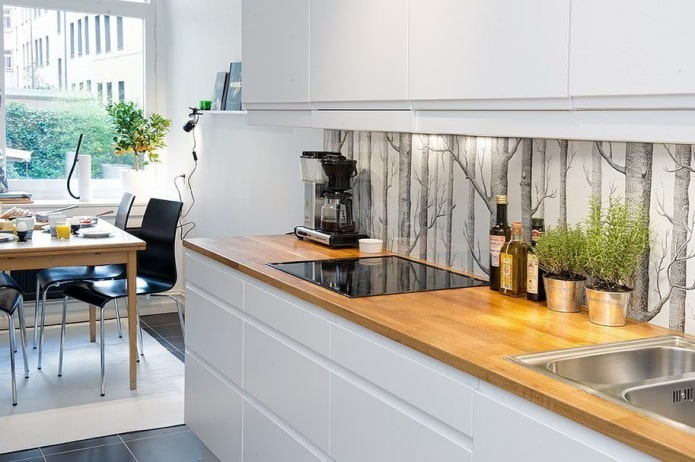


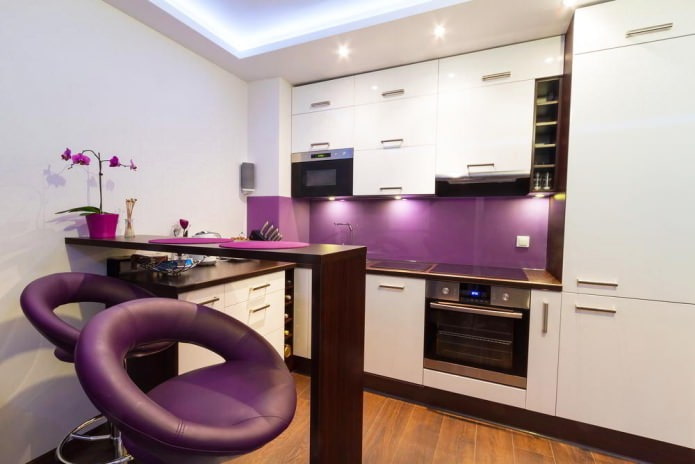


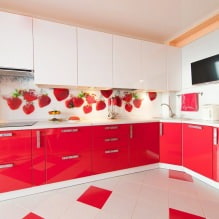
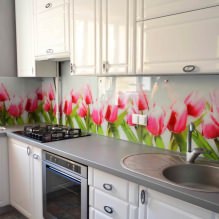
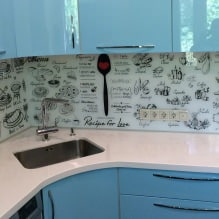
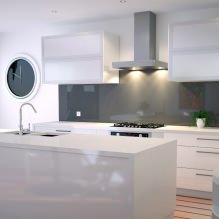
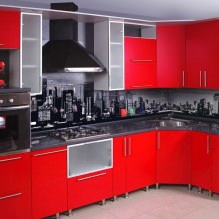
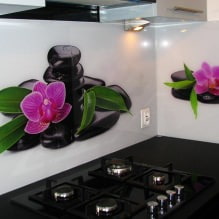
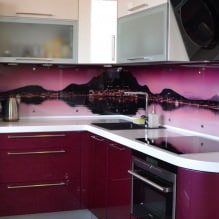
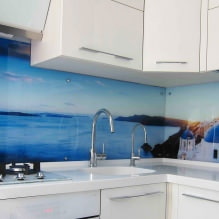
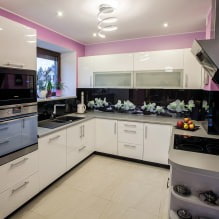
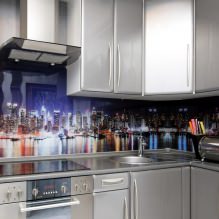
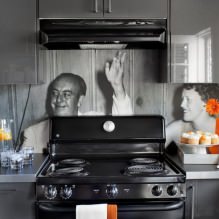
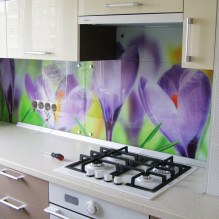
 How to choose the color of your kitchen sink?
How to choose the color of your kitchen sink? White kitchen set: features of choice, combination, 70 photos in the interior
White kitchen set: features of choice, combination, 70 photos in the interior Black set in the interior in the kitchen: design, choice of wallpaper, 90 photos
Black set in the interior in the kitchen: design, choice of wallpaper, 90 photos How to choose curtains for the kitchen and not regret it? - we understand all the nuances
How to choose curtains for the kitchen and not regret it? - we understand all the nuances Design of a white kitchen with a black countertop: 80 best ideas, photos in the interior
Design of a white kitchen with a black countertop: 80 best ideas, photos in the interior Kitchen design with green wallpaper: 55 modern photos in the interior
Kitchen design with green wallpaper: 55 modern photos in the interior